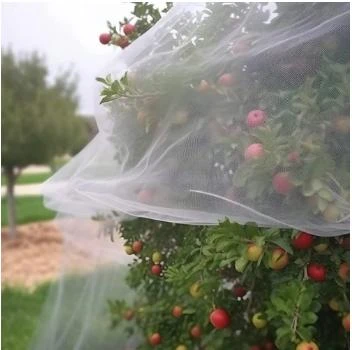-
 Afrikaans
Afrikaans -
 Albanian
Albanian -
 Amharic
Amharic -
 Arabic
Arabic -
 Armenian
Armenian -
 Azerbaijani
Azerbaijani -
 Basque
Basque -
 Belarusian
Belarusian -
 Bengali
Bengali -
 Bosnian
Bosnian -
 Bulgarian
Bulgarian -
 Catalan
Catalan -
 Cebuano
Cebuano -
 China
China -
 Corsican
Corsican -
 Croatian
Croatian -
 Czech
Czech -
 Danish
Danish -
 Dutch
Dutch -
 English
English -
 Esperanto
Esperanto -
 Estonian
Estonian -
 Finnish
Finnish -
 French
French -
 Frisian
Frisian -
 Galician
Galician -
 Georgian
Georgian -
 German
German -
 Greek
Greek -
 Gujarati
Gujarati -
 Haitian Creole
Haitian Creole -
 hausa
hausa -
 hawaiian
hawaiian -
 Hebrew
Hebrew -
 Hindi
Hindi -
 Miao
Miao -
 Hungarian
Hungarian -
 Icelandic
Icelandic -
 igbo
igbo -
 Indonesian
Indonesian -
 irish
irish -
 Italian
Italian -
 Japanese
Japanese -
 Javanese
Javanese -
 Kannada
Kannada -
 kazakh
kazakh -
 Khmer
Khmer -
 Rwandese
Rwandese -
 Korean
Korean -
 Kurdish
Kurdish -
 Kyrgyz
Kyrgyz -
 Lao
Lao -
 Latin
Latin -
 Latvian
Latvian -
 Lithuanian
Lithuanian -
 Luxembourgish
Luxembourgish -
 Macedonian
Macedonian -
 Malgashi
Malgashi -
 Malay
Malay -
 Malayalam
Malayalam -
 Maltese
Maltese -
 Maori
Maori -
 Marathi
Marathi -
 Mongolian
Mongolian -
 Myanmar
Myanmar -
 Nepali
Nepali -
 Norwegian
Norwegian -
 Norwegian
Norwegian -
 Occitan
Occitan -
 Pashto
Pashto -
 Persian
Persian -
 Polish
Polish -
 Portuguese
Portuguese -
 Punjabi
Punjabi -
 Romanian
Romanian -
 Russian
Russian -
 Samoan
Samoan -
 Scottish Gaelic
Scottish Gaelic -
 Serbian
Serbian -
 Sesotho
Sesotho -
 Shona
Shona -
 Sindhi
Sindhi -
 Sinhala
Sinhala -
 Slovak
Slovak -
 Slovenian
Slovenian -
 Somali
Somali -
 Spanish
Spanish -
 Sundanese
Sundanese -
 Swahili
Swahili -
 Swedish
Swedish -
 Tagalog
Tagalog -
 Tajik
Tajik -
 Tamil
Tamil -
 Tatar
Tatar -
 Telugu
Telugu -
 Thai
Thai -
 Turkish
Turkish -
 Turkmen
Turkmen -
 Ukrainian
Ukrainian -
 Urdu
Urdu -
 Uighur
Uighur -
 Uzbek
Uzbek -
 Vietnamese
Vietnamese -
 Welsh
Welsh -
 Bantu
Bantu -
 Yiddish
Yiddish -
 Yoruba
Yoruba -
 Zulu
Zulu
Jan . 13, 2025 18:07
Back to list
anti hail net
For gardening enthusiasts, protecting your plants from harsh weather conditions is a crucial aspect of maintaining a healthy and flourishing garden. Hailstorms, in particular, pose a significant threat, often leaving gardens severely damaged. With years of experience in horticulture and weather protection, I’ve gathered some expert advice on safeguarding your garden from hail.
Beyond the tangible methods, employing a diverse planting strategy ensures that not all your plants are vulnerable. Select hail-resistant plant varieties that are naturally hardier and can endure adverse weather conditions. Certain leafy greens, root vegetables, and herbs are known for their robust nature and ability to recuperate quickly after a hailstorm. When selecting products for hail protection, prioritize those that come with credible reviews and certifications. Trustworthy brands are transparent about their testing and performance standards, granting peace of mind that your investment offers authentic value. Additionally, engaging with gardening communities online or in-person can provide real-life insights and recommendations, enhancing your knowledge and confidence in product selections. Maintaining detailed records of your garden’s performance during hail events can further bolster your protective strategies. By understanding which plants or areas suffer most, you can adjust your protection measures accordingly, optimizing resilience and minimizing future risks. Adopting these protective measures not only shields your garden from hail but also enhances its overall health and productivity. By combining knowledge with action, you ensure your garden thrives despite the challenges nature may present, truly embodying the principles of experience, expertise, authoritativeness, and trustworthiness in every gardening endeavor.


Beyond the tangible methods, employing a diverse planting strategy ensures that not all your plants are vulnerable. Select hail-resistant plant varieties that are naturally hardier and can endure adverse weather conditions. Certain leafy greens, root vegetables, and herbs are known for their robust nature and ability to recuperate quickly after a hailstorm. When selecting products for hail protection, prioritize those that come with credible reviews and certifications. Trustworthy brands are transparent about their testing and performance standards, granting peace of mind that your investment offers authentic value. Additionally, engaging with gardening communities online or in-person can provide real-life insights and recommendations, enhancing your knowledge and confidence in product selections. Maintaining detailed records of your garden’s performance during hail events can further bolster your protective strategies. By understanding which plants or areas suffer most, you can adjust your protection measures accordingly, optimizing resilience and minimizing future risks. Adopting these protective measures not only shields your garden from hail but also enhances its overall health and productivity. By combining knowledge with action, you ensure your garden thrives despite the challenges nature may present, truly embodying the principles of experience, expertise, authoritativeness, and trustworthiness in every gardening endeavor.
Next:
Latest news
-
Shipping Plastic Bags for Every NeedNewsJul.24,2025
-
Safety Netting: Your Shield in ConstructionNewsJul.24,2025
-
Plastic Mesh Netting for Everyday UseNewsJul.24,2025
-
Nylon Netting for Every UseNewsJul.24,2025
-
Mesh Breeder Box for Fish TanksNewsJul.24,2025
-
Expanded Steel Mesh Offers Durable VersatilityNewsJul.24,2025











